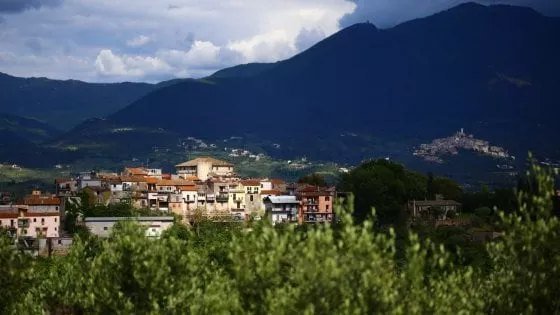Cretone is a fraction of the municipality of Palombara Sabina, in the territory of the metropolitan city of Rome, famous for its thermal baths that have gushed here for millennia. The town has its roots even in the seventh century BC, when its hill was occupied for the first time by the Sabine populations. The archaic village followed the fate of the whole Sabine territory following the war in 290 BC. which led the Romans to a crushing victory, which subjected the Sabine cities to the dominion of Rome; at the time the whole area was characterized by the presence of rustic villas in whose farms the products sent to the city market were grown, while in the following centuries the Castrum Cretonis was first owned by the Savelli family and then, until 1817, by the Borghese. The baths were already known in the times of the Sabines and the Ancient Romans, with their sulphurous thermo-mineral waters that flow from two sources at a temperature of 23.5-24 ° C.
The town is also known for the products grown in its countryside, starting with the olives from which extra virgin olive oil with DOP recognition is produced.
Things to see and do in Cretone
In addition to the activities and structures related to the thermal baths, in Cretone it is possible to go to the discovery of the small medieval village, where it is worth visiting the Savelli Castle, the 11th century Collegiate Church and the abandoned Fortress of Castiglione, the ancient castle dating back to to the thirteenth century, which offers a magnificent view over the whole Sabina. For nature lovers there is the Monti Lucretili Regional Park, which covers 18,000 hectares and is home to various species protected by wide valleys, woods and water sources. Cretone is also famous for the tasty seasonal fruit (peaches, cherries and plums) that grow in its countryside:
A few kilometers from Cretone, downstream of Monte Gennaro, rises Palombara Sabina, with its Savelli Castle, in whose halls you can admire the frescoes of the Raphael school; "the rescue" also winds from the ancient fortress, a long tunnel with 37 loopholes once used by crossbowmen to pass from the tower to the fortress without being seen.
In September there is a party with the "Sagra del ciammellocco", a donut made with eggs, flour, anise, lemon and olive oil from Sabina, to which are added the longarini al sauce, a simple and tasty first course. During the festival days, medieval and flag-waving performances are also organized, artistic craft stalls, re-enactments of ancient crafts and guided tours of the ancient village accompanied by tastings of typical products.


